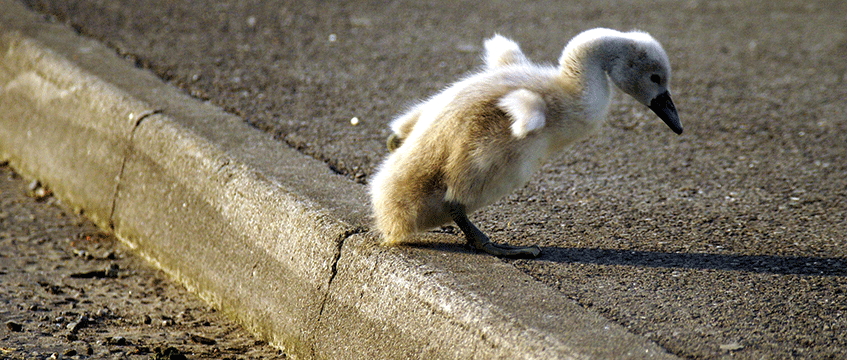The High Court has confirmed that a danger which is obvious does not trigger an occupier’s duty of care under the Occupiers’ Liability Act 1957 in Juj v John Lewis Partnership plc [2022] EWHC 2418 (KB); [2022] PLSCS 161, an appeal against a decision that a fall in a Waitrose car park in Ruislip was simply an accident for which Waitrose was not liable.
Background
The appellant sought damages for personal injury arising from the fall in May 2015. He claimed that the respondent had breached its duty of care to him under the 1957 Act, causing him to trip on a kerb next to a disabled parking bay in which his wife, a blue badge holder, had parked their car. The appellant suffered a fractured wrist, facial and brain injuries with long-term consequences. The respondent denied liability.
The car park was owned by the London Borough of Hillingdon, which collected the revenue from the pay-and-display system, emptied bins and undertook repairs from time to time. The respondent had no licence or other legal interest in the car park, although it held keys to the car park, which displayed Waitrose branding. No claim was brought against Hillingdon.
Key points
- Occupiers’ liability requires breach of duty to visitors
- There is no obligation to warn of obvious dangers
- There can be more than one occupier who has control over premises
Decision
The judge in the Central London County Court dismissed the claim. While the respondent had sufficient control to be an occupier of the car park, that control was limited to dealing with immediate hazards, putting in place interim measures to deal with those hazards and reporting matters to Hillingdon. The respondent’s duty of care was limited to the extent of its control: it was not entitled, nor required, to paint the kerbs, put up warning notices or make any long-term or structural changes.
While the kerb could be clearly seen and there was no trap, the design of the bay, which required elderly and/or disabled customers to manoeuvre between the side of the car and the kerb, was an unreasonable danger for the disabled, the class of visitors using the bay.
The only breach by the respondent of its duty of care was a failure to report accidents sooner to Hillingdon. There had been incidents in each year prior to the claimant’s accident but the respondent only reported the issue to Hillingdon in 2016. Yet Hillingdon had ignored the respondent’s request to paint the kerbs and the judge considered it unlikely that an earlier request would have produced a different result. The incident was a true accident and nothing the respondent did or failed to do caused it.
The claimant appealed as to the extent of the respondent’s duty of care, the steps it should have taken and the conclusion that the event was a true accident.
The law
The 1957 Act regulates the duty which an occupier of premises owes to its visitors in respect of dangers due to the state of the premises or things done or omitted to be done on them. An occupier owes a duty of care to all visitors to take such care as is reasonable in all the circumstances to see that the visitor will be reasonably safe using the premises for the purpose for which they are invited or permitted to be there.
An occupier is any person who has a sufficient degree of control over premises that they ought to realise that any failure on their part to use care may result in injury to a lawful visitor. There may be two or more occupiers and any degree of control over the state of the premises is sufficient Wheat v E Lacon & Co Ltd [1966] AC 552.
However, a duty to warn only arises if, without a warning, the visitor would be unaware of the nature and extent of the risk. If the danger is obvious, the visitor is able to appreciate it, is not under any kind of pressure and is free to do what is necessary for their own safety, no warning is required. It is unnecessary, for example, to warn an adult of sound mind that it is dangerous to go near the edge of an obvious cliff: Staples v West Dorset DC [1995] PIQR 439.
Appeal
The High Court upheld the judge’s finding that the respondent was an occupier of the car park for limited purposes, which encompassed dealing with immediate hazards; putting in place interim measures to deal with hazards; and reporting issues to Hillingdon. It also extended – contrary to the judge’s finding – to putting up warning signage where necessary and reiterating reasonably frequently any concerns which Hillingdon had not attended to within a reasonable period. If warranted, it would have extended to putting up a sign warning of the narrow gap between vehicles and the kerb in the relevant parking bay.
However, all the features of the bay – its size and the presence of the kerb – would be obvious to a user entering it, as would the need to manoeuvre between the side of the car and the kerb. Consequently, the respondent did not come under any duty under the 1957 Act either to warn visitors of the danger identified by the judge or to draw it to Hillingdon’s attention despite earlier accidents in or around the bay. The appellant’s accident was not caused by the danger identified by the judge or any breach of duty by the respondent. He had simply misjudged his step, as he might have done on any street kerb, in any location.
Louise Clark is a property law consultant and mediator











